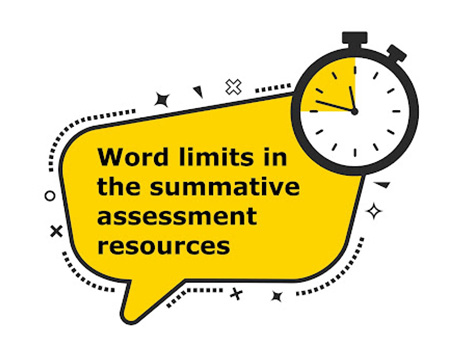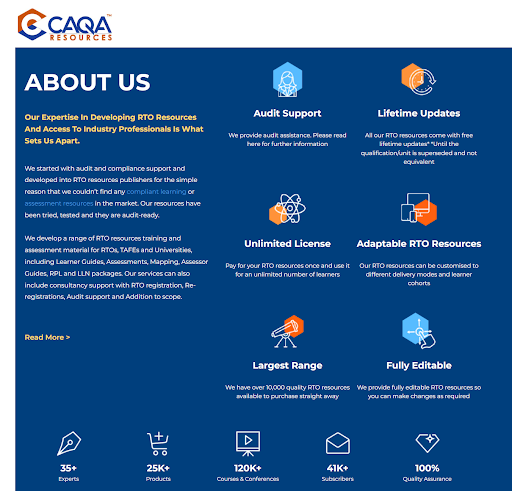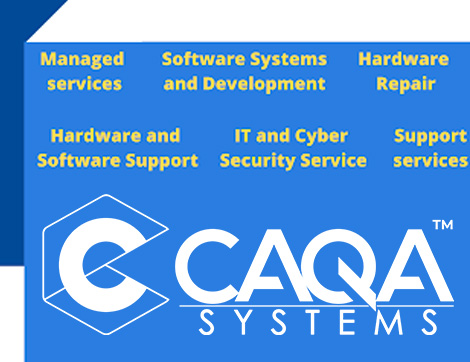Griffith TAFE is encouraging those seeking new jobs to get in touch about upcoming courses
Griffith TAFE is encouraging those looking for new opportunities to come in and have a chat about possible futures and enrolment for semester two, just in time for National Careers Week.
National Careers Week this year comes on May 16, just after a new report revealed 24 per cent of workers are actively pursuing new careers.
For more information, please click here.
TAFE eyes new debt collector to chase students
TAFE SA is searching for a new debt collection agency to recover more than $200,000 a month in unpaid fees by tracking down students, visiting their homes and making “phone demands” to pay up. TAFE SA has released a tender calling for expressions of interest for the provision of “Debt Recovery Services” from an “external third-party debt collection agency”.
The tender outlines that the winning contractor would be expected to handle roughly 320 TAFE SA debtors a month, accounting for an “average monthly debt value” of $220,000.
“TAFE SA has a need for debt recovery services both domestic and international for the recovery of unpaid student fees and corporate accounts,” the tender states.
For more information, please click here.
The value of volunteering: volunteering in education and productivity at work
The Education and Employers charity has been supporting people from the world of work to volunteer in schools and colleges since 2009, publishing peer-reviewed research on the benefits for young people’s confidence, career aspirations, attainment and employment outcomes. This latest research reveals the ‘mirror benefits’ for volunteers, drawing on a survey of 1,026 volunteers, detailed volunteer case studies and the broader empirical literature.
For more information, please click here.
Teaching digital skills: implications for VET educators – good practice guide
The rise of Industry 4.0 and the digital economy has highlighted the need for the general workforce to hold digital skills. But what are the implications for vocational education and training (VET) educators in ensuring the workforce is appropriately skilled?
This guide highlights the implications for VET educators of the increasing need to include digital skills in VET delivery. A forum convened by NCVER in late 2019, VET’s response to Industry 4.0 and the digital economy: what works, has helped shape this guide. Participants at the forum included representatives from Skills Service Organisations, members of the Education IRC, industry, provider and practitioner-related bodies, policy-makers, and relevant researchers. A companion ‘good practice guide’ has been developed for VET provider and policy makers focusing on the incorporation of digital skills into VET delivery.
A companion good practice guide – Incorporating digital skills into VET delivery is also available.
For more information, please click here.
Incorporating digital skills into VET delivery: good practice guide
Given its ties to industry, vocational education and training (VET) has a crucial role in ensuring the workforce possesses the skills for responding to Industry 4.0, with advanced technologies now entering workplaces and transforming how businesses operate.
This good practice guide is intended to provide advice on incorporating digital skills into VET delivery for VET providers and policy-makers. A forum convened by NCVER in late 2019, VET’s response to Industry 4.0 and the digital economy: what works, has helped shape this guide. Participants at the forum included representatives from Skills Service Organisations; members of the Education IRC; industry, provider and practitioner-related bodies; policy-makers; and relevant researchers. A companion good practice guide has been developed focused on the implications for VET educators of the increasing need to include digital skills in VET delivery.
A companion good practice guide – Teaching digital skills: implications for VET educators is also available.
For more information, please click here.
Skilling the Australian workforce for the digital economy
This study explored the current digital skills demand and supply situation in Australia’s workforce. The research investigated the skills impact of digitalisation on two industry sectors—transport and logistics, and public safety and correctional services—as well as the wider workforce. The research culminated in a proposed Australian workplace digital skills framework to help identify digital skills gaps among Australian industries and workforces to enable the development of appropriate training programs.
For more information, please click here.
Why Universities Should Prioritize Student Success in IT Decision-Making
Students make up the backbone of every higher education institution. These inquisitive minds are the reason colleges and universities exist in the first place, so it stands to reason that the institution’s decisions should be made with the goal of supporting learners and their diverse needs.
This philosophy should extend to the IT department. Every technology investment a university makes should affect the students in some way. Making technology accessible, preparing students with the digital fluency to succeed in school and in the workforce, and promoting equitable digital access is up to the university.
For more information, please click here.
Industry welcomes Labor’s commitment to hospitality skills training
Australia’s Labor Party has announced a $48 million tourism and travel package which includes a $10 million injection in training and skills development for the hospitality and accommodation sectors.
Industry groups the Accommodation Association, Australian Hotels Association and Tourism Accommodation Australia, who have long called for additional funding for training, have welcomed the commitment.
“As one of the safest and most exciting destinations in the world, it is vital our accommodation and hospitality workforce has the necessary skills and training to provide wonderful customer service and experiences,” Accommodation Association President, and incoming Accommodation Australia President, Leanne Harwood, said.
“The statistics speak for themselves – we need to attract, educate and re-train 100,000 staff into hospitality after more than 40 per cent of our workforce was lost nationally during COVID.
“This funding will help us work with all training organisations to bring staff back into our resilient sector and help us build for a brighter future.”
Australian Hotels Association CEO, Stephen Ferguson, said the grant would support the industry to hire young and old, and retain strong talent.
For more information, please click here.
Without foreign students and workers, retail sector calls for pensioners to fill staffing gaps
The Australian Retailers Association (ARA) has called on new government policy to unlock pensioner participation in a sector that is facing its tightest labour market in half a century, exacerbated by a lower inflow of international students and working holiday makers.
The peak retail body is supporting calls to allow employment income to be exempt from the Age Pension income test, which would help pensioners supplement their incomes and alleviate longstanding staff shortages.
ARA CEO Paul Zahra says there are now more than 29,000 job vacancies in the retail industry nationwide.
“We are in the tightest labour market in more than 50 years and without the usual numbers of overseas workers and students, these gaps won’t be filled using traditional recruitment methods,” Zahra says.
“Retail has always been a powerfully diverse employment sector and we need to think more creatively about how we can mobilise new segments of our Australian workforce such as mature age workers and pensioners.
“We would like to see this as a priority for the Federal government immediately following the election. Should the new government enact this considered change, a new workforce of pensioners can be unlocked and able to choose work that suits them in an economy that desperately needs their efforts.”
For more information, please click here.
International students are still being routinely exploited
Over the decade leading up to COVID, the exploitation of international students became systemic across the Australian economy.
Multiple reports bemoaned the rampant wage theft from international students, especially from migrant employers of the same nationality.
For example, the 2016 Senate Committee report, A National Disgrace: The Exploitation of Temporary Work Visa Holders, noted that international students “were consistently reported to suffer widespread exploitation in the Australian workforce”, and that “a large portion of the hours that international students worked was undocumented (and unpaid)”.
The 2018 book, The Wage Crisis in Australia similarly noted that international students are vulnerable to exploitation as they “see themselves as involved in a project of ‘staggered’ or ‘multi-step’ migration”. The book’s analysis claimed around two-thirds of international students were paid below the minimum wage, with one-quarter earning $12/hour or less and 43% of students earning $15/hour or less.
And in 2019, the Report of the Migrant Workers’ Taskforce found that about one-quarter of international students were paid around half the legal minimum wage, with exploitation of international students labelled “endemic”.
It seems the pandemic has done little to stem the exploitation, with international students continuing to report widespread wage theft:
For more information, please click here.
Major milestone for fee-free training in NSW
NSW is enjoying a fee-free training boom with more than 200,000 enrolments recorded under JobTrainer, a program helping people get skilled for in-demand jobs.
Premier Dominic Perrottet said the NSW Government’s strong economic management means we can deliver programs such as JobTrainer to equip people with the skills they need to get their first job, a new job or a better job.
“The NSW Government is turbocharging the take-up of vocational education and training to create a strong pipeline of skilled and qualified workers, which is helping secure a brighter future for NSW families,” Mr Perrottet said.
“Our record infrastructure program is creating enormous demand for jobs and our investment in fee-free training is helping meet that demand so we can continue to build what matters to make daily life better.
“The success of the JobTrainer program is helping strengthen our economy, which means more money for services, community amenity and less pressure on households.”
Training under the program is fee-free and fully funded for eligible people wanting to upskill or reskill.
The NSW Government has expanded the eligibility criteria for the program to target more in-demand industries, including construction, manufacturing, transport, logistics, aged care, disability care, childcare and digital skills.
JobTrainer has also supported more than 5,000 women into construction-related courses through the Built for Women initiative.
For more information, please click here.
How Chinese young people embrace vocational education
China has attached great importance to the development of vocational education in recent years. Find out how Chinese young people embrace skills training at vocational schools.
For more information, please click here.
Training the key to skills shortage
THE automotive industry is facing the most serious skills shortage in its history, ravaged by diminished apprentice intake, COVID and business contraction.
In its manifesto that highlighted the needs of industry from a new federal government, the Victorian Automotive Chamber of Commerce (VACC) said there was a skilled labour deficit of 31,143 positions across the industry that is forecast to rise to 38,700 positions during 2022/23.
For more information, please click here.
Students “in limbo” during two-year wait for Australia visas
These students say they are “in limbo” as Australia’s Department of Home Affairs, which oversees immigration, refuses to provide a clear timeline of when students can expect to hear the outcome of their applications.
Alokita, an Indian student, received an offer to study aerospace engineering at UNSW Canberra in September 2020 and was due to begin her PhD in February 2021. Her visa has been “under assessment” since she submitted the application at the beginning of October 2020 and she says when she asks for updates from the DHA, she only ever receives “generic” responses.
Alokita says the university has been “very supportive” and has already let her defer her place five times due to the delay, but it will not allow any further deferments – if her visa is not accepted by June, she will lose her scholarship and PhD place.
“Every day I wake up in a hope to get a conclusion, a direction, and a fixed course of action but every day I am faced with the same uncertainties,” Alokita said, adding that the last two years have been “filled with insane amounts of stress”.
UNSW Canberra did not respond to requests for comment.
For more information, please click here.
What are the challenges facing Australia’s medical workforce crisis?
The health and welfare workforces deliver various services through Australia’s private and public organisations. However, there is an imbalance in the system as the extent of services delivered is way lesser than what is actually needed, primarily due to workforce crisis.
The accurate picture of the healthcare workforce crisis in Australia was revealed during the COVID-19 pandemic. During the period, the biggest challenge was not the supply of medicine or equipment but the availability of a skilled workforce.
However, the bitter truth is that the workforce crisis has not been caused by the pandemic; it has merely been exposed and worsened by COVID-19 onslaught.
For more information, please click here.
Vocational education: Change negative mindset
There is a narrative that has been around for a while tagging technical/vocational education as a last resort after one fails to advance in formal education. The other was that it’s the cheaper option if one failed to raise the tuition for instance to finish high school or to join university or if one had dropped out of school. This type of education has often been categorised as an option for intellectually inferior students and associated with “unpopular” blue-collar employment. The perception has been deeply ingrained in people that parents regarded their children as failures and in disappointment ‘dumped’ them into the technical/vocational schools.
For more information, please click here.
International students continue to shun Australia
Late last year, the Morrison Government announced reforms to visa arrangements to ensure a “rapid return of international students”.
The reforms included:
- granting a two year Temporary Graduate visa to Vocational Education and Training (VET) sector graduates; and
- extending the temporary graduate visa from two to three years for masters by coursework graduates.
According to the latest arrivals data from the Australian Bureau of Statistics (ABS), released yesterday, student arrivals have failed to rebound, with only 28,290 arriving in the three months to March 2022.
For more information, please click here.
NZ brings forward reopening to students, changes post-study work rights
Prime Minister Jacinda Ardern confirmed that from July 31st all visitors will be able to enter the country, and that international students will be able to apply for visas.
She said the reopening was part of a package of measures to support economic recovery and to fill labour shortages in the country.
Working holiday visas have been open since March and the country opened to fully vaccinated visitors from visa waiver countries at the beginning of this month. A special cohort of 5,000 international students who will be able to enter earlier than full reopening is underway. As recently reported, Education New Zealand advised agencies that some places in the cohort are still available for English language and private tertiary education.
The latest announcement from the Prime Minister means that the international education sector will be fully reopen from July 31st.
Commenting on the recommencement of student visa processing, Grant McPherson, Chief Executive of Education New Zealand , said in a statement that it was a “welcome step forward and sends a strong signal that New Zealand is fully reopening to the world”.
“This announcement brings much-needed certainty for our existing and prospective international students after an anxious and stressful two years stranded outside the country because of border restrictions,” said Universities New Zealand – Te Pōkai Tara Chief Executive Chris Whelan.
For more information, please click here.
London universities plan “leading” international strategy
“Where London leads; I have no doubt the rest of the country will follow,” was the message from Chris Skidmore, former minister of state for universities, speaking to representatives from 25 of London’s higher education institutions at a roundtable event in Westminster this week.
The event, organised by London Higher and Oxford International Education Group, included insight from IDP Connect and Nous Group and signalled the start of a renewed effort from stakeholders in the English capital to re-establish “brand London” in the face of strong global competition from the US, Australia, Canada and New Zealand.
Skidmore, speaking via video link from Brussels as part of a UK Parliamentary Partnership Assembly, warned against the UK standing still in setting new international recruitment targets.
“Last year, the Department published an update to the international education strategy, reaffirming a commitment to reaching the milestones mentioned; yet it lacked any new ambitions or policy innovations,” he said.
The UK national target of 600,000 international students attending British universities (and generating an annual education export market of £35 billion) was reached 10 years ahead of schedule, due, in part, to the reinstated policy lever of a post-study work visa in 2021, but also due to border closures and travel disruption for competitor destinations during the pandemic.
For more information, please click here.




















